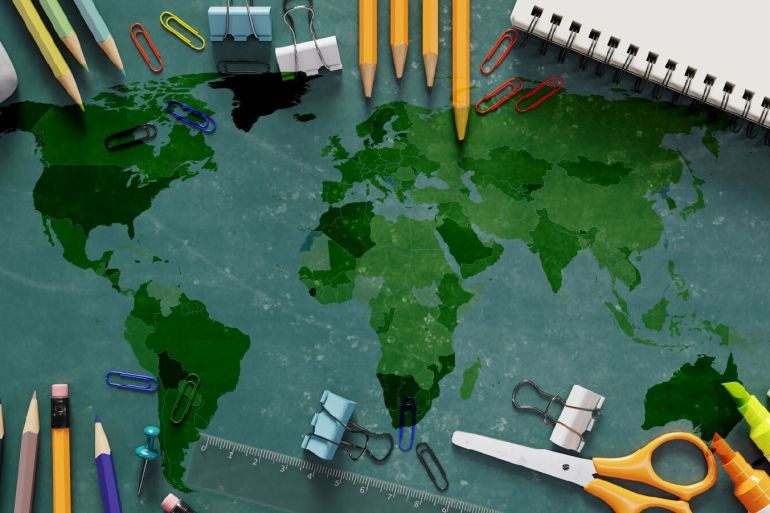Back to school: Which countries spend the most on education?
With school back in session, Al Jazeera looks at the state of global education.

Millions of children returned to school this week as summer holidays concluded in many parts of the northern hemisphere.
However, it is estimated that 244 million children between the ages of six and 18 worldwide are still out of school.
Keep reading
list of 3 itemsChildren go back to school in NW Syria after devastating quakes
Back to school: Muslim girls battle France’s abaya ban
Education is a key driver for social and economic development. According to the World Bank, each additional year of schooling is associated with a nine percent rise in hourly earnings.
Global education levels
Just under 10 percent of the world’s population above the age of 15 has no formal education, meaning they did not enter or complete the first grade, according to data compiled by the Wittgenstein Centre.
About 10 percent of people have completed primary education – which runs from nursery to 11 or 12 years old – with an additional five percent having incomplete primary school education.
Nearly 40 percent of the world’s population has been educated to either lower or upper secondary education, which usually runs from the ages of 11 or 12 through to 18 or 19 years old.
The remaining 12 percent of the world’s population has attained an education past the secondary stage, this is compared with just one percent in 1950. Individuals with higher levels of education tend to enjoy better overall health and wellbeing.
Which countries have the longest schooling?
A child spends 12.8 years on average at school or university, according to the United Nations Development Programme. This includes primary, secondary, post-secondary non-tertiary and tertiary education as well as years spent on repetition.
With 21.1 years of expected schooling, Australians spend the longest time in the education system, followed by New Zealand (20.3 years) and Greece (20 years).
South Sudan has the lowest expected years of schooling at 5.5 years, followed by Niger (6.9 years) and Mali (7.4 years).
Use the table below to see the expected years of schooling in your country.
How much do countries spend on education?
In 2020 the world spent about $5 trillion, 4.33 percent of global gross domestic product (GDP), on education. To put that into perspective, the world spent about $9 trillion on healthcare and nearly $2 trillion on its militaries that same year.
According to UNESCO, high-income countries spent nearly double the amount on education as low-income countries in 2020.
In 2020, the United States spent about 6.05 percent of its GDP on education while in South America, Bolivia led the region at 9.84 percent.
In Africa, Namibia allocated the most significant proportion, dedicating 9.64 percent of its GDP to education. While in Asia, Saudi Arabia was the top spender at 7.81 percent. In Europe, Greenland led the way by allocating a substantial 10.5 percent of its GDP to education, nearly double the European Union’s average of 5.13 percent.
The map below shows the total general government expenditure on education at all levels of government and all levels of education, as a share of GDP.